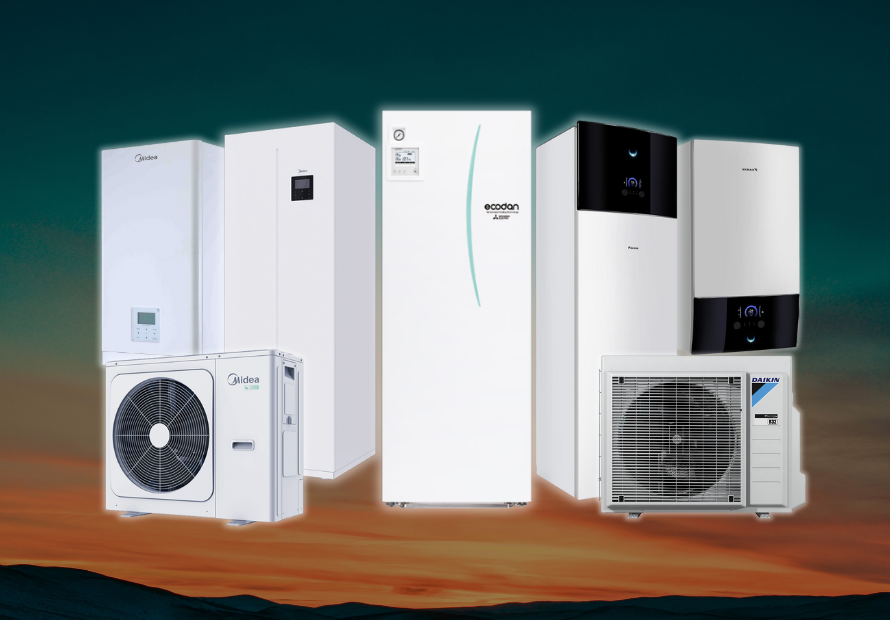18.03.2024
III. Heat pumps - air to water type heat pumps, their advantages and disadvantages

If you are currently building a new house or are considering buying a new home, there is a very good chance that the house is planned or already has a heating system with an air-to-water heat pump. And with good reason - today, air-to-water heat pumps can efficiently provide heating and hot water for larger private homes and even commercial buildings.
Air-to-water heat pumps are divided into two categories, depending on their working principle:
- Monobloc heat pumps have all the necessary heat pump components integrated in the outdoor unit, with outlets to the heating system elements that are indoors (hot water boiler, storage tank, distribution manifold). This is the main advantage of this type of heat pump - everything is in one place and, if the heat pump only provides heating, there is minimal indoor heating. The main disadvantage of the monobloc heat pump is more related to the Nordic climate than to the heat pump itself: as the return and return heat transfer medium is prepared outdoors, there is a risk that at low temperatures it may affect the temperature of the return heat transfer medium or, in the worst case, even freeze. This problem can be solved by proper insulation of the piping or by preparing a special heat channel for it.
- Split-type or split heat pumps are so called because the necessary elements are divided into separate outdoor and indoor units which, like air-to-air heat pumps, are connected by refrigerant pipes. This solves the problem of the heat transfer medium being outside the building, but requires a place to install it. Given that the newer generation of air-to-water heat pump indoor units are not loud, it is possible to fit them not just in the utility room, but even in the bathroom or kitchen, a feature that is reflected in the design of many models of indoor units (for example, Daikin indoor units are available in both white and silver, depending on the refrigerator and other kitchen appliances). If the heat pump is also to be used for hot water production, the indoor unit can also be purchased with a built-in hot water boiler.
The advantages of air-to-water heat pumps are many and outweigh their disadvantages:
- Air-to-water heat pumps can also be used to replace a heating system or in combination with other heating sources thanks to their high efficiency - as already mentioned, most of the available heat pump models will provide satisfactory heating up to temperatures as low as -25°C;
- Air-to-water heat pumps are able to produce hot water, either in a separate hot water tank or in an integrated boiler (depending on the unit inside);
- Convenient, simple controls that make it easy to set up and operate the heat pump, either on site or remotely;
- Very simple installation, without needing excavation work;
- Depending on the heat pump and the circuit, cooling during summer is possible.
The disadvantages of air-to-water heat pumps are generally similar to air-to-air heat pumps: at very low temperatures their efficiency will decrease and the integrated electric heating element may have to be used, and the limitations of an intermittent heat pump for the defrost process have to be considered. This may result in icing of the equipment as well as intermittent condensate discharge.
When purchasing an air-to-water heat pump, we recommend that you assess your needs very carefully. It may be tempting to buy an air-to-water heat pump with a power reserve or a solid flow temperature reserve, but as far as the heat pump operation goes, it will only reflect in the form of unnecessary electrical consumption. If the heat pump will heat warm floors, there is no need to buy a high-temperature heat pump, even if it is used to produce hot water. The process of preparing it is different from heating and even conventional air-to-water heat pumps will be able to heat it to a sufficiently high temperature.
In the next article, we will look at ground-source heat pumps, which are probably the most complex but also the most efficient of the popular heat pump types.
Back to news